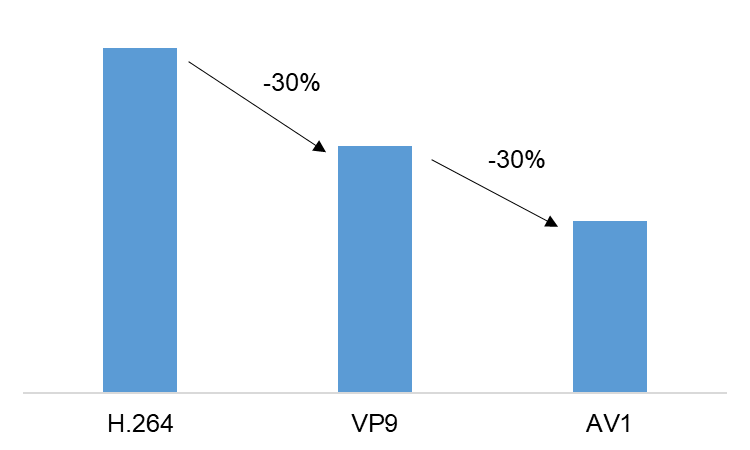Today, Meta, Vodafone, and Google released a white paper, “Video Streaming with the AV1 Video Codec in Mobile Devices,” detailing the benefits of the AV1 codec, an advanced video compression technique, to enhance the streaming video experience on mobile devices.
The white paper recommends that:
- Vendors of core processors (SoCs) should evaluate the adoption of AV1 hardware.
- In scenarios where this is not an option, vendors should consider using a software-based AV1 decoder, which can help with the transition to AV1 in low/mid-tier devices.
Today, video content represents between 70-80% of all mobile data traffic. And low- and mid-tier handsets account for around 75% of handset sales globally. AV1 decoding can be implemented in smartphones in both hardware and software. Our testing has shown that increasing the use of AV1 in low- to mid-tier smartphones can deliver video quality on par with premium handsets and free up network capacity while optimising computing power and storage.
Why We Recommend AV1 for Streaming Video on Mobile
At Meta, we’ve already implemented AV1-compatible codecs into our technologies. Along with other large technology companies, like Google, we’ve found that AV1 codes can enhance video compression by 30% compared to prior standards like H.264 and VP9, making it suitable for most types of video format.

However, many of the mobile phones in use today are lower- and mid-tier handsets that lack the necessary codec, particularly built-in hardware, to decompress files with AV1 to deliver a buffer-free video experience.
Despite the improvement in user-experience, smartphone chipset support for such codecs today remains limited to higher tier products. Advanced video compression technology in mid- and low-tier smartphones would enhance the viewing experience for more people.
This is an opportunity to further collaborate among content providers and network operators to align with chipset manufacturers and device operating system developers to guarantee the best quality of experience to end-users, while ensuring optimal utilization of network resources with reduced congestion.
The Advantage of AV1
AV1 has matured enough to help operators deal with the increasing amount of video traffic to mobile devices while also saving on compute, edge cache resources, and energy costs. Greater adoption of AV1 would help reduce network capacity for mobile operators while also helping them meet increasing user demand.
AV1 can be implemented either as a smartphone software upgrade or embedded in mobile devices’ core processors (SoCs) for better battery efficiency and performance for end users. As highlighted in the white paper, AV1 hardware can give smartphone manufacturers superior energy-efficient compression gains compared to other techniques, without compromising connection speeds.
Download the White Paper
“Video Streaming with the AV1 Video Codec in Mobile Devices“






